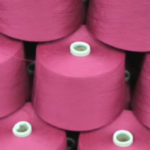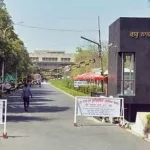T. KINKELDEI, G. TRÖSTER,
Eidgenössische Technische Hochschule Zürich (ETHZ),
Electronics Laboratory, Zurich, Switzerland;
C. ATAMAN, G. MATTANA, F. MOLINA LOPEZ, D. BRIAND, N.F. DE ROOIJ,
Ecole Polytechnique Fédérale de Lausanne (EPFL),
Institute of Microengineering (IMT), Sensors,
Actuators and Microsystems Laboratory (SAMLAB), Neuchâtel, Switzerland;
D. LEUENBERGER, G. NISATO,
Centre Suisse d’Electronique et de Microtechnique SA (CSEM SA),
Muttenz, Switzerland
We demonstrate a woven textile with integrated humidity and temperature
sensors on flexible PET and PI substrates. We discuss the fabrication
process of the smart textile and compare two methods of sensor fabrication, first conventional photo lithography and second printing using an ink jet or gravure. The humidity sensor is based on a capacitive transducer covered with a sensing layer while the temperature sensor is made of a resistive metallic line.
An encapsulation method protecting the sensors during dicing, weaving and operation has been successfully implemented. The fabricated structures are tested to bending strain, a main source of failure during the fabrication of textiles. We were able to bend bare electrodes and complete sensors down to a minimal bending radius of 100 µm without loss of functionality.The woven temperature sensor has a linear sensitivity of 1.175/°C with a temperature coefficient of 0.0027 /°C, the humidity sensor shows a repeatable behavior in the tested humidity range between 20 to 70 %RH.
The weaving process does not damage or change the behavior of the fabricated sensors. This contribution will highlight the challenges and promises of printed and laminating processes for the large scale fabrication of smart polymeric stripes to be woven into textiles.
Back to the Abstracts of the
4th Intl Conference “Smart Materials, Structures and Systems”




